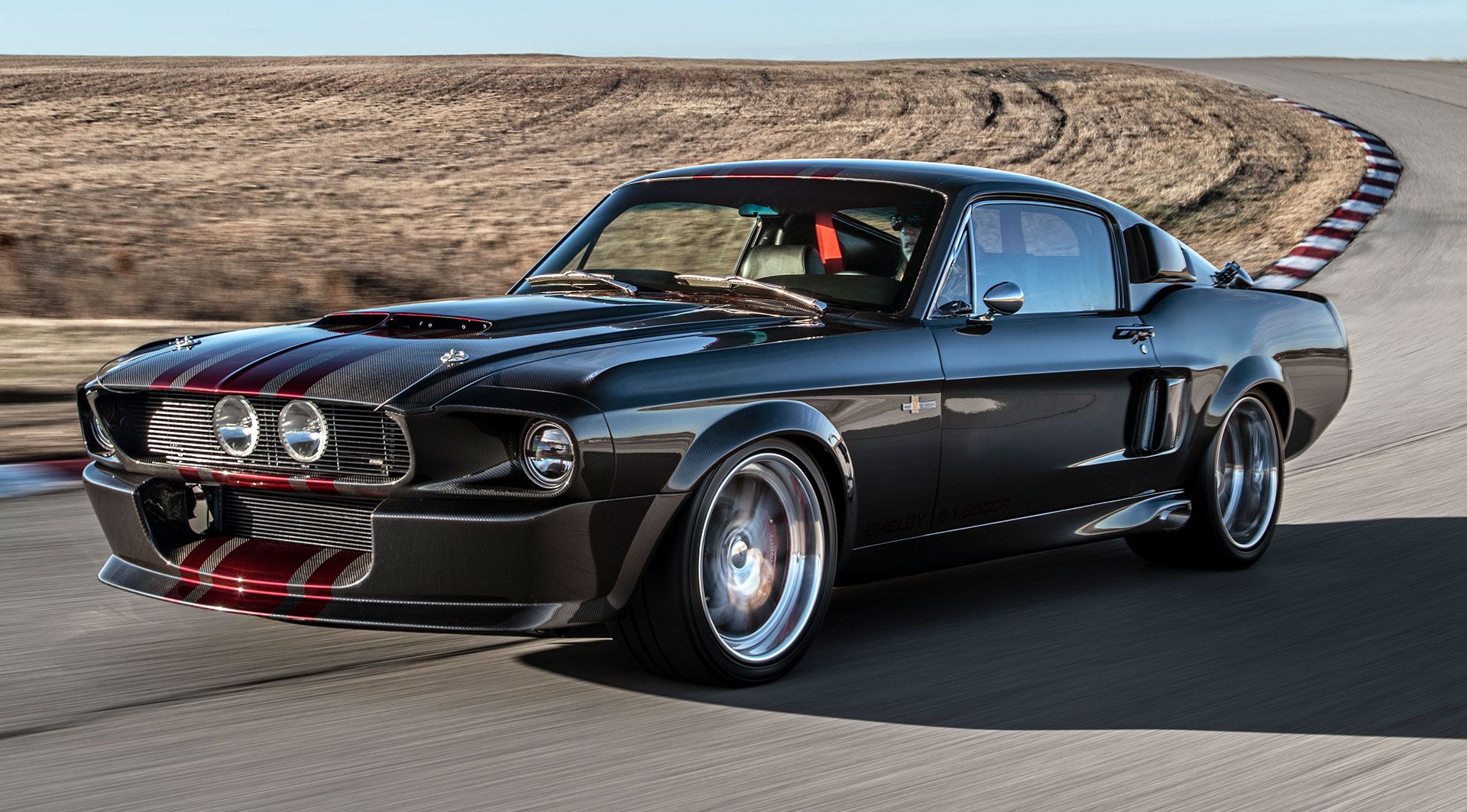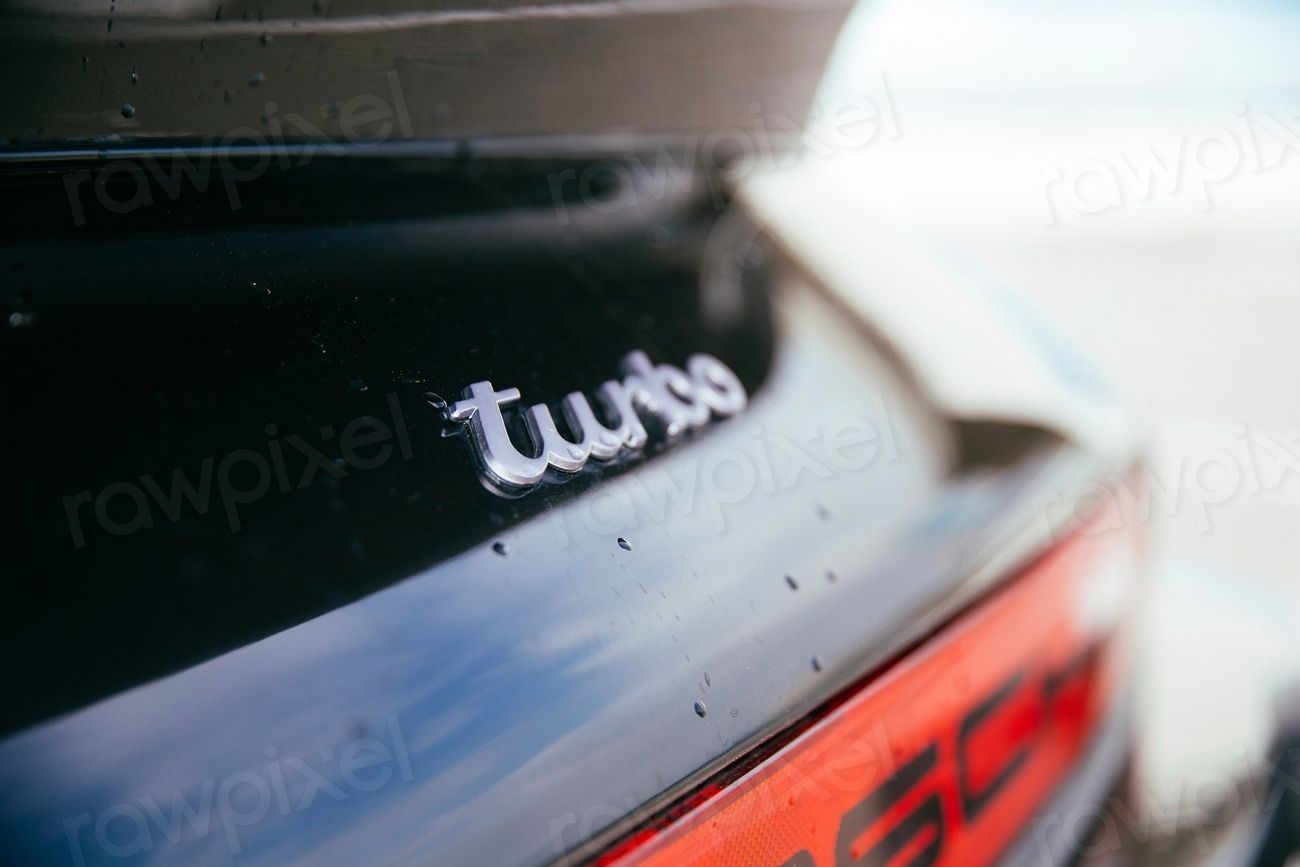
For many Americans, the decision to purchase a vehicle extends far beyond its initial performance or aesthetic appeal; reliability stands as an equally, if not more, critical factor. Few experiences can diminish the pride of car ownership as swiftly or severely as an engine overhaul, a repair known for its significant cost, extensive time commitment, and often, its indication of a vehicle reaching the twilight of its useful life. It’s a prospect that sends shivers down the spine of any diligent car owner, emphasizing the paramount importance of choosing a vehicle engineered for endurance.
Yet, amidst concerns over potential mechanical failures and the inevitable wear and tear, there exists a commendable category of vehicles that have defied common expectations. These models have not only proven themselves remarkably resilient but have also consistently delivered dependable performance over hundreds of thousands of miles without necessitating major internal engine work. They are the quiet achievers in an industry often focused on innovation, representing genuine long-term value and peace of mind for their owners.
In an effort to empower consumers with unbiased, data-driven insights, this in-depth analysis will spotlight ten such vehicles. While some of these names are fixtures in discussions about automotive reliability, others may surprise you with their unassuming yet ironclad durability. Each of these vehicles has, through consistent, real-world performance, cemented its reputation among U.S. drivers as a testament to engineering excellence and an enduring investment that keeps you on the road, not in the repair shop.
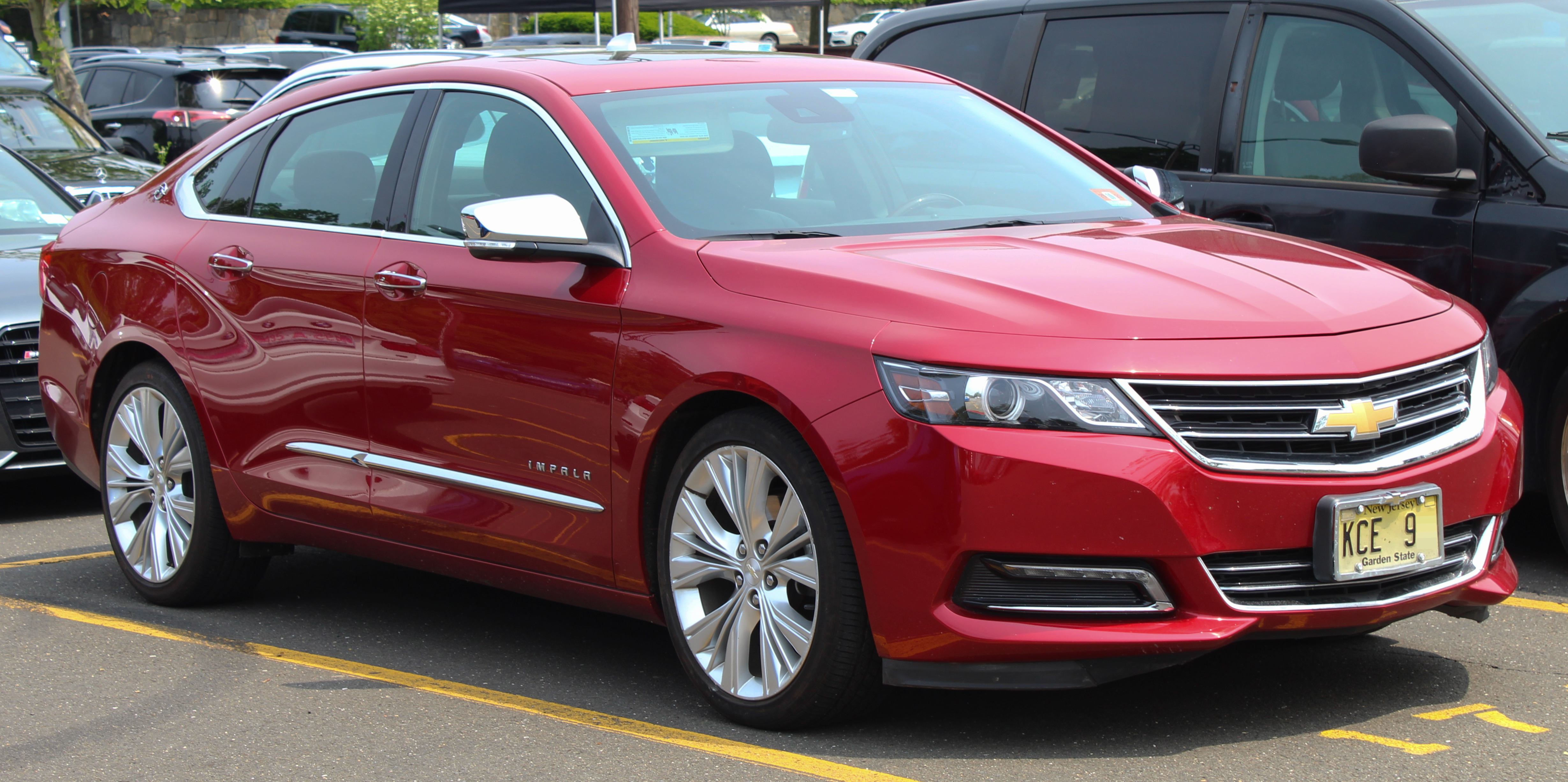
1. **Chevrolet Impala (3.6L V6 Models)**The Chevrolet Impala has long held a cherished place in the hearts of American drivers, celebrated primarily for its remarkably spacious cabin and the consistently comfortable ride it offers. What frequently goes unnoticed, however, is the exceptional reliability inherent in its 3.6-liter V6 engine, a powertrain that proves itself to be a true workhorse beneath the Impala’s composed exterior.
It is not uncommon to find many Impalas from the 2010s era still operating with impressive vigor, their odometers displaying well over 200,000 miles. This enduring performance positions these models as a true hidden gem for individuals seeking affordability without compromising on the promise of long-term longevity, particularly within the competitive full-size sedan segment.
Specifically, the Chevrolet Impala 10 LT 3.6 V6, manufactured between 2017 and 2020, exemplifies a sophisticated blend of power, luxurious comfort, and cutting-edge modern engineering. This particular model is equipped with a 3.6-liter V6 engine that incorporates GM’s advanced High Feature LFX 3600 Direct Injection (SIDI) technology, a system designed for both efficiency and robust output. With a displacement of 3564 cc (equivalent to 217.5 cu-in), this naturally aspirated V6 powerhouse is capable of generating an impressive 309 PS (305 horsepower or 227 kW) at a spirited 6800 rpm, while delivering a maximum torque of 358 Nm (264 lb-ft) at 5200 rpm.
The engineering prowess extends to its internal architecture, featuring bore and stroke measurements of 94.0 mm by 85.6 mm, paired with a compression ratio of 11.5:1. The engine design incorporates 24 valves, utilizing an aluminum block and head for optimal weight distribution and heat management. Its transverse alignment drives the front wheels through a seamless six-speed automatic transmission, contributing to its smooth and predictable handling. From an environmental perspective, the Impala is fitted with a catalytic converter and a Lambda sensor, ensuring compliance with stringent emission standards.
When it comes to fuel efficiency, the Impala provides a balanced performance for its class, with EPA ratings of 19 mpg in urban driving, 28 mpg on the highway, and a combined average of 22 mpg. Bolstered by a substantial 60-liter (15.9-gallon) fuel tank, the Impala boasts an estimated driving range of approximately 561 km (349 miles). These attributes collectively underscore the Impala’s strong value proposition, offering a compelling blend of durability, performance, and practical economy for discerning buyers.
Car Model Information: 1966 Chevrolet Impala SS
Name: Chevrolet Impala
Caption: Fourth-generation model (1967)
Manufacturer: Chevrolet
Production: 1957–1985,1994–1996,1999–2020
ModelYears: 1958–1985,1994–1996,2000–2020
Predecessor: Chevrolet Bel Air,Chevrolet Lumina#Second generation (1995–2001)
Successor: Chevrolet SS,Chevrolet Caprice
Platform: GM B platform,GM W platform,GM W platform (GMX211) (2005–2013),GM Epsilon platform#Epsilon II
Class: Full-size car,Mid-size car
Layout: Front-engine, rear-wheel-drive layout,Front-engine, front-wheel-drive layout
Categories: 1960s cars, 1970s cars, 1980s cars, 1990s cars, 2000s cars
Summary: The Chevrolet Impala () is a full-size car that was built by Chevrolet for model years 1958 to 1985, 1994 to 1996, and 2000 to 2020. The Impala was Chevrolet’s popular flagship passenger car and was among the better-selling American-made automobiles in the United States.
For its debut in 1958, the Impala was distinguished from other models by its symmetrical triple taillights. The Chevrolet Caprice was introduced as a top-line Impala Sport Sedan for model year 1965, later becoming a separate series positioned above the Impala in 1966, which, in turn, remained above the Chevrolet Bel Air and the Chevrolet Biscayne. The Impala continued as Chevrolet’s most popular full-sized model through the mid-1980s. Between 1994 and 1996, the Impala was revised as a 5.7-liter V8–powered version of the Chevrolet Caprice Classic sedan.
In 2000, the Impala was reintroduced again as a mainstream front-wheel drive car. In February 2014, the 2014 Impala ranked No. 1 among Affordable Large Cars in U.S. News & World Report’s rankings. When the 10th generation of the Impala was introduced for the 2014 model year, the 9th generation was rebadged as the Impala Limited and sold only to fleet customers through 2016. During that time, both versions were sold in the United States and Canada. The 10th-generation Impala was also sold in the Middle East and South Korea.
Get more information about: Chevrolet Impala
Buying a high-performing used car >>>
Brand: Chevrolet Model: Impala
Price: $56,991 Mileage: 51,426 mi.

2. **Nissan Altima (2.5L I4)**The Nissan Altima, often navigating in the shadow of its more prominent rivals such as the Toyota Camry or Honda Accord, possesses a commendable secret weapon in its arsenal: the enduring durability of its 2.5-liter four-cylinder engine. This powerplant has consistently ranked as one of the most robust and reliable options within its segment, proving its mettle over years of demanding use.
Owners of Altimas have frequently attested to the remarkable resilience of this four-cylinder engine, noting its capacity to withstand countless years of daily commuting and rigorous road conditions without succumbing to serious mechanical issues. When diligently maintained according to recommended schedules, it is far from an anomaly to encounter Altimas that have accumulated an impressive 250,000 miles on their odometers, all while their original engines continue to perform without requiring major repairs.
The heart of this reliability is the 2.5-liter QR25DE engine, which, from a technical perspective, is essentially an enhanced and enlarged iteration of its smaller sibling, the QR20DE. This engineering evolution introduced several key distinctions. Rather than simply sharing the same crankshaft, the QR25DE was outfitted with a meticulously redesigned crankshaft, which facilitated a longer 100 mm stroke—a significant increase compared to the QR20DE’s 80.3 mm. To seamlessly integrate this extended stroke, Nissan ingeniously shortened the connecting rods, allowing the engine’s displacement to expand to 2.5 liters while thoughtfully preserving the original 89 mm cylinder bore. While this enhancement undeniably delivered a welcome boost in torque, it also introduced increased stress on the cylinders, piston rings, and connecting rods. Consequently, the earlier iterations of the QR25DE were somewhat more susceptible to issues like elevated oil consumption and were accompanied by a shorter factory warranty when contrasted with the 2.0-liter version.
In a clear demonstration of their commitment to continuous improvement, Nissan implemented a series of crucial updates in 2007, specifically aimed at bolstering the engine’s durability and refining its overall performance. These significant revisions included the introduction of a redesigned intake manifold, the integration of new pistons, the use of stronger connecting rods, and a strategic repositioning of the balancing system closer to the center of the engine block. Furthermore, the engine benefited from new camshafts, which were engineered to enhance both efficiency and refinement. Despite these comprehensive improvements, Nissan judiciously retained the same lightweight aluminum block construction that had previously defined the QR25DE, striking a balance between weight and structural integrity.
Technically, the QR25DE operates as an inline-four, dual-overhead-cam (DOHC) engine, featuring four valves per cylinder to optimize airflow and combustion. Its construction boasts an aluminum block and head, complemented by electronic fuel injection, and it is designed to run efficiently on gasoline. With precise bore and stroke dimensions of 89 mm and 100 mm respectively, its total displacement culminates at 2,488 cc. The engine’s compression ratios exhibit some variability, ranging between 9.5 and 10.5, a specification that is tailored to its specific application. Power output also varies, from 152 to 182 horsepower at 6,000 rpm, with corresponding torque figures ranging between 173 and 180 lb-ft at 4,000 rpm. The firing order is a standard 1-3-4-2, and the engine typically requires approximately 5.1 liters of oil, with recommended viscosities of 0W-20 or 5W-30, and oil change intervals generally set around 10,000 miles, although exact specifications may vary by model and market.
Throughout its extensive production history, the versatile QR25DE engine has served as the dependable heart for an impressive array of Nissan vehicles, including popular models like the Teana, X-Trail, Murano, Rogue, Bassara, Serena, Sentra, Presage, Altima, and Frontier, as well as the more performance-oriented Sentra SE-R. Its influence even extended to the Suzuki Equator, a rebadged midsize pickup truck. This widespread application unequivocally highlights the engine’s inherent versatility and reliability, though diligent owners should always remain cognizant of its few known weaknesses and commit to rigorous regular maintenance to ensure its continued dependable operation.
Car Model Information: 2020 Nissan Altima S FWD
Name: Nissan Altima
Caption: 2024 Nissan Altima SR (L34; US)
Manufacturer: Nissan
Aka: Nissan Bluebird
Production: 1992–present
Class: Compact car
Predecessor: Nissan Bluebird,Nissan Stanza
ModelYears: 1993–present
Categories: 2000s cars, 2010s cars, 2020s cars, All-wheel-drive vehicles, All Wikipedia articles written in American English
Summary: The Nissan Altima is a mid-size car manufactured by Nissan since 1992. It is a continuation of the Nissan Bluebird line, which began in 1955.
The Altima has historically been larger, more powerful, and more luxurious than the Nissan Sentra but less so than the Nissan Maxima. The first through fourth-generation cars were manufactured exclusively in the United States and officially sold in North and South America, along with the Middle East and Australia. For other markets, Nissan sold a related mid-size sedan called the Nissan Teana which was between the Altima and Maxima in terms of size. In 2013, the Teana became a rebadged version of the fifth-generation Altima.
The name “Altima” was originally applied to a top trim line of the Nissan Leopard for the Japanese market in 1986, and then to the Nissan Laurel Altima mid-size car sold in Central America and the Caribbean before 1992. In 1992, Nissan discontinued the Stanza which was a Nissan Bluebird clone, replacing it with the US-built Altima, while remaining a compact car. The first Altima was produced in June 1992, as a 1993 model. All Altima models for the North American market were built in Smyrna, Tennessee, until June 2004, when Nissan’s Canton, Mississippi plant also began producing the model to meet high demand.
Get more information about: Nissan Altima
Buying a high-performing used car >>>
Brand: Nissan Model: Altima
Price: $13,961 Mileage: 95,871 mi.
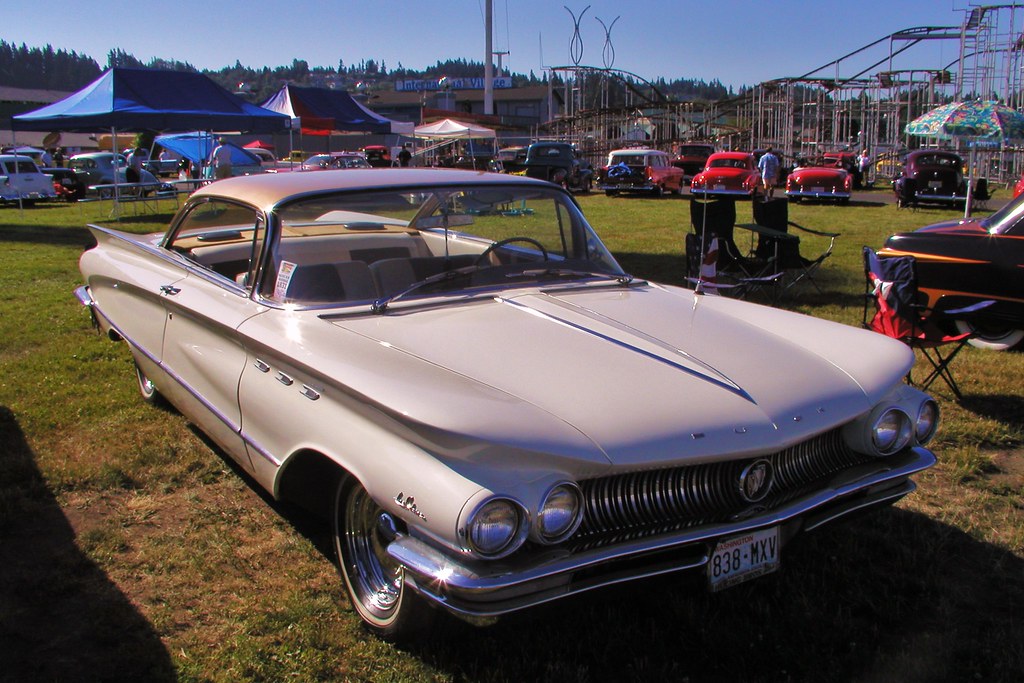
3. **Buick LeSabre (3800 Series II V6)**For those who appreciate automotive history, the Buick LeSabre, particularly models equipped with the legendary 3800 Series II engine, stands as a venerable throwback to a golden era of General Motors’ dependable powertrains. This engine is more than just a component; it’s a testament to robust American engineering, celebrated for its almost mythical toughness and resilience.
Produced consistently until the mid-2000s, the 3800 Series II V6 continues to garner widespread praise from professional mechanics who often describe it as being nearly bulletproof. This reputation is well-earned, as countless Buick LeSabres remain fixtures on U.S. roads, serving faithfully as daily drivers and frequently surpassing astonishing milestones of 300,000 miles with their original engines entirely intact and performing reliably.
When the conversation invariably turns to the formidable powerplants that have defined American-made automobiles, the discussion almost instinctively gravitates towards V8 engines. These large, potent motors have long stood as iconic symbols of raw strength and exhilarating performance, undeniably dominating the glorious golden era of American muscle cars throughout the 1960s and early 1970s. However, while the V8 undeniably commands a significant portion of the spotlight and admiration, it is essential to acknowledge that there are other American-built engines that are equally deserving of profound respect and recognition.
V6 engines, despite often being unfairly overlooked in the grandeur of their V8 counterparts, have played an absolutely vital and indispensable role in delivering an essential trifecta of balance, unwavering dependability, and impressive efficiency to generations of drivers. Among these commendable V6 offerings, one of the most universally respected and enduring examples is undoubtedly Buick and General Motors’ venerable 3800 Series II V6. This particular engine, officially designated as the L36, made its auspicious debut for the 1995 model year, proudly succeeding the Series I L27, and marking a significant evolution in its lineage. Yet, the storied history of the 3800 series stretches considerably further back, with deep roots firmly established in the early 1960s.
By the time the Series II arrived on the scene, the engine had already meticulously built a formidable and unshakeable reputation for both its exceptional reliability and its commendable fuel efficiency. Its consistently strong performance in real-world driving scenarios frequently earned it critical acclaim and recognition as one of the absolute best engines in the industry during its operational span. Indeed, it made frequent and well-deserved appearances on prestigious lists highlighting the top ten engines of its time, a testament to its engineering excellence and widespread appreciation.
It is important to understand that the 3800 Series II V6 was never intentionally designed to compete directly with the high-output, intensely performance-focused engines that prioritized raw speed and acceleration. With a modest output of 205 horsepower, it certainly did not aim to rival its larger, more powerful counterparts in sheer force. Instead, its true genius and enduring appeal lay in its unparalleled ability to excel as an inherently dependable, exceptionally practical engine that perfectly met the diverse and evolving needs of everyday drivers. This harmonious blend of unwavering durability, impressive efficiency, and more than adequate power made it an incredibly attractive and compelling option for a vast spectrum of buyers. As a direct consequence of its undeniable success and reliability, General Motors enthusiastically adopted it across a broad range of its vehicles, installing the L36 in models spanning several of its esteemed brands. This extensive and widespread use unequivocally cemented its status as an indispensable staple engine of its era, one that is still fondly remembered for consistently providing countless drivers with truly trustworthy and long-lasting performance.
Car Model Information: 2005 Buick LeSabre Custom
Caption: 1975 Buick LeSabre Custom
Name: Buick LeSabre
Manufacturer: Buick
ModelYears: 1959–2005
Predecessor: Buick Special
Successor: Buick Lucerne
Class: Full-size car
Layout: FR layout,Front-engine, front-wheel-drive layout
Categories: 1960s cars, 1970s cars, 1980s cars, 1990s cars, 2000s cars
Summary: The Buick LeSabre is a full-size car made by the division Buick of General Motors from 1959 until 2005. Prior to 1959, this position had been retained by the full-size Buick Special model (1936–58). The “LeSabre”, which is French for “the sabre”, was Buick’s mid-level full-size sedan above the Special but below the Electra during the 1960s then remained in its market position when the Electra was replaced with the Park Avenue. The LeSabre was available as a 2-door convertible, sedan or hardtop, a 4-door sedan or hardtop and station wagon throughout its production.
Get more information about: Buick LeSabre
Buying a high-performing used car >>>
Brand: Buick Model: LeSabre
Price: $2,999 Mileage: 115,797 mi.
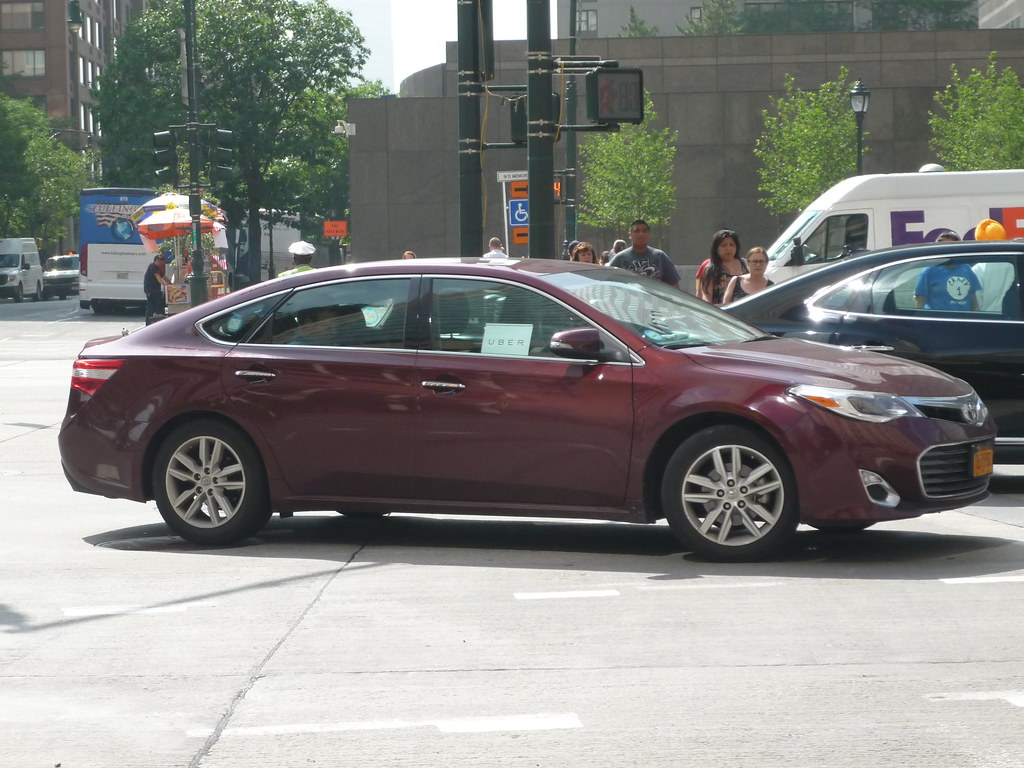
4. **Toyota Avalon**While the Toyota Camry frequently commands the lion’s share of attention and accolades within the mid-size sedan segment, its larger, more refined sibling, the Toyota Avalon, quietly and consistently delivers an even more impressive degree of longevity and unwavering reliability. This full-size sedan, powered predominantly by Toyota’s robust and meticulously engineered V6 engines, has cultivated a sterling reputation for its ability to traverse vast distances with little more than diligent routine maintenance.
The Avalon has become a favored choice among a discerning demographic, including retired professionals who value its sophisticated comfort and long-distance commuters who depend on its unfailing performance. Both groups consistently praise the Avalon for its harmonious blend of an exceptionally comfortable and serene ride with a powertrain that, with proper care, almost never necessitates an engine overhaul. This steadfast reliability makes it a truly wise investment for those prioritizing long-term dependability.
Car Model Information: 2021 Toyota Avalon TRD
Name: Toyota Avalon
Caption: Toyota Avalon XSE (GSX50, Canada)
Manufacturer: Toyota
Aka: Toyota Pronard (Japan, 2000–2004)
Production: 1994–present
ModelYears: 1995–2022 (US)
Class: Full-size car
BodyStyle: Sedan (automobile)
Layout: unbulleted list
Predecessor: unbulleted list
Successor: unbulleted list
Categories: 2000s cars, 2010s cars, 2020s cars, All-wheel-drive vehicles, All Wikipedia articles written in American English
Summary: The Toyota Avalon (Japanese: トヨタ・アバロン, Hepburn: Toyota Abaron) is a full-size sedan manufactured by Toyota, as its largest front-wheel drive sedan; also its flagship in the United States, Canada, China and the Middle East. The Avalon was also manufactured in Australia from April 2000 until June 2005, when it was replaced in November 2006 by the Aurion. The first production Avalon was manufactured in September 1994 at the TMMK assembly line in Georgetown, Kentucky, where subsequent generations have been manufactured.
Toyota marketed the front-drive Avalon as a replacement for its rear-drive Cressida, a model discontinued for the American market in 1992. The Cressida was an upper-level, mid-size, rear-wheel drive sedan. The Avalon has at times overlapped Toyota’s models using the same platform, including the Camry V6 and the Lexus ES. The third-generation and subsequent generations was distinguished by offering extra legroom due to its extended-length chassis. From 2013, the Lexus ES was moved to the extended platform to match the Avalon.
As of 2013, the Avalon was sold in the United States, Canada, China, South Korea and the Middle East. It was discontinued in the United States in 2022.
Avalon is a legendary island of the Arthurian legend, fitting it in with Toyota’s tradition of naming their sedans after variants of the word for “crown” in various languages (Crown, Corona, Camry, Corolla), types of crowns (Tiara), or other aspects of royalty (Scepter).
Get more information about: Toyota Avalon
Buying a high-performing used car >>>
Brand: Toyota Model: Avalon
Price: $35,199 Mileage: 28,856 mi.
Read more about: Navigating the Nuances: 10 Cars with the Most Reliable CVT Transmissions in 2025
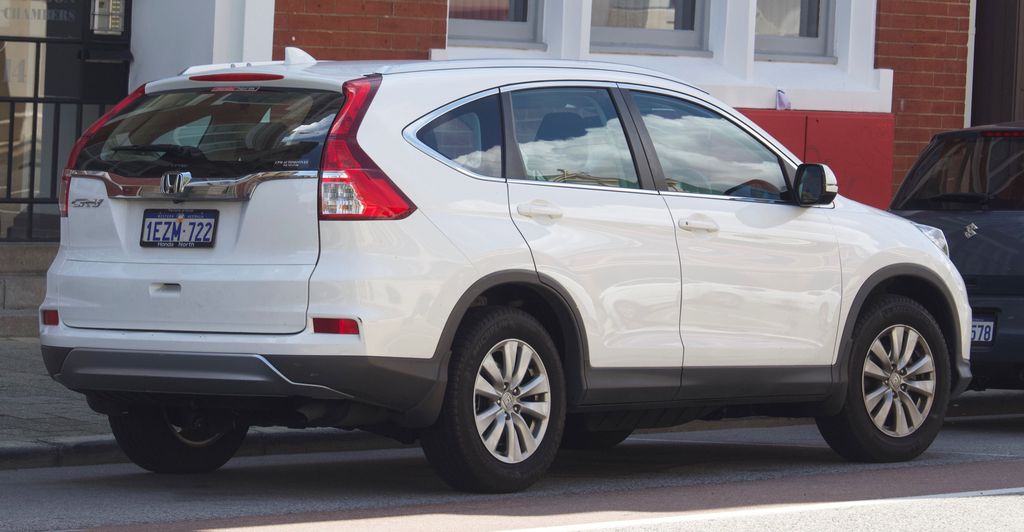
5. **Honda CR-V**In the fiercely competitive landscape of the U.S. automotive market, where crossovers have become the dominant vehicle segment, the Honda CR-V distinguishes itself as a paragon of reliability and practical excellence. Its range of four-cylinder engines, particularly the naturally aspirated versions, have earned a formidable reputation for lasting well past the 200,000-mile mark, a testament to Honda’s renowned engineering precision.
For American families who are in search of a practical and versatile SUV that promises not to burden them with unexpected and costly repair bills, the Honda CR-V consistently stands out as an unequivocally safe bet. Its blend of utility, efficiency, and steadfast dependability makes it an ideal choice for both daily commutes and adventurous family road trips, offering peace of mind for years to come.
The 2022 Honda CR-V, while perhaps not the most exhilarating or performance-oriented SUV on the market, unequivocally excels in other critical areas. Its notably spacious interior provides ample room for passengers and cargo, while its impressive fuel efficiency helps to keep operating costs in check. Although its standard turbocharged gasoline engine and available hybrid variant may not deliver pulse-pounding speed, the CR-V offers a deeply satisfying driving experience characterized by predictable handling, composed braking, and an exceptionally calm ride, which is particularly enjoyable during extended journeys.
Drivers may find it beneficial to adopt a gentler approach to the accelerator pedal to mitigate the base engine’s occasional droning note under heavy load. However, in exchange for this consideration, they are rewarded with outstanding fuel economy, significantly reducing the frequency of stops at the pump, a definite advantage on long family road trips. Furthermore, the CR-V comes equipped with a comprehensive suite of standard safety technologies and desirable infotainment options, including Apple CarPlay and Android Auto, all of which substantially enhance its overall appeal and help it maintain a strong competitive edge in a crowded market segment. While it may not project the flashiest or most overtly luxurious image in its class, the 2022 CR-V continues to impress as one of the most capable, thoroughly practical, and genuinely satisfying SUVs available today.
Starting at an accessible price point of $28,045, the CR-V is positioned competitively within its segment, with available trims extending up to $39,045 for the top-tier Touring Hybrid. The diverse range of configurations includes the LX, EX, EX-L, EX Hybrid, EX-L Hybrid, Touring, and Touring Hybrid, catering to a wide array of preferences and budgets. For those prioritizing optimal value, the EX Hybrid is frequently recommended, offering a robust suite of desirable features such as blind-spot monitoring, dual-zone climate control for enhanced comfort, heated front seats, a power-adjustable driver’s seat, and a user-friendly 7.0-inch touchscreen infotainment system that seamlessly integrates with both Apple CarPlay and Android Auto. All-wheel drive is included as a standard feature on this trim, though no additional options are offered, simplifying the purchasing decision.
For the 2022 model year, Honda meticulously maintained the CR-V lineup without introducing any significant changes, a decision that heightened anticipation for the forthcoming next-generation model, which was widely expected for 2023. Early spy shots and industry rumors hinted at a sleeker, more contemporary exterior design and the potential introduction of innovative new features, including a much-discussed third-row seating option to enhance versatility. Future powertrain offerings are projected to continue with both gasoline-only and hybrid setups, with additional speculation suggesting the eventual arrival of an all-electric variant, underscoring Honda’s commitment to evolving its popular crossover.
Under the hood, the 2022 CR-V’s base model is competently powered by a 1.5-liter turbocharged four-cylinder engine, which produces a respectable 190 horsepower. This engine is expertly paired with one of the most refined continuously variable automatic transmissions (CVTs) in its class, ensuring smooth and efficient power delivery. While its towing capacity is modest, rated at just 1,500 pounds, the CR-V truly excels in its everyday driving dynamics, offering a consistently comfortable ride, highly responsive steering, and confident, reassuring braking performance. Parents and daily commuters alike will undoubtedly appreciate the composed and predictable nature of this SUV, even if its acceleration might not entirely satisfy the desires of dedicated performance enthusiasts. For those seeking a notably quieter and more refined driving experience, the CR-V Hybrid presents an excellent alternative. It seamlessly combines a 2.0-liter four-cylinder engine with two electric motors, collectively generating a robust total output of 201 horsepower. Honda thoughtfully equipped the hybrid model with enhanced sound-deadening materials and an active noise cancellation system, ensuring an exceptionally calm and serene cabin environment, even under demanding throttle application. Compared to the base engine, which can occasionally exhibit a somewhat harsh sound when pushed aggressively, the hybrid variant consistently delivers a smoother and significantly quieter drive, making it an outstanding option for drivers who prioritize refinement and acoustic comfort above all else.
Car Model Information: 2024 Honda CR-V EX AWD
Name: Honda CR-V
Caption: 2023 Honda CR-V e:HEV
Manufacturer: Honda
Aka: Honda Breeze (China, 2019–present)
Production: 1995–present
Class: Compact crossover SUV
BodyStyle: Sport utility vehicle
Layout: Front-engine, front-wheel-drive layout,Front-engine, four-wheel-drive layout
Chassis: Unibody
Predecessor: Honda Crossroad
Successor: Honda ZR-V
Categories: 2000s cars, 2010s cars, 2020s cars, All-wheel-drive vehicles, All Wikipedia articles written in British English
Summary: The Honda CR-V (also sold as the Honda Breeze in China since 2019) is a compact crossover SUV manufactured by Japanese automaker Honda since 1995. Initial models of the CR-V were built using the same platform as the Civic.
Honda began producing the CR-V in Japan and United Kingdom, for worldwide markets, adding North American manufacturing sites in the United States and Mexico in 2007, and Canada in 2012. The CR-V is also produced in Wuhan for the Chinese market by Dongfeng Honda, and also marketed as the Breeze in China for the version produced at Guangzhou by Guangqi Honda.
Honda states that “CR-V” stands for “Comfortable Runabout Vehicle,” while the term “Compact Recreational Vehicle” was used in a British car review article that was republished by Honda, associating the model name with the Sports Utility Vehicle abbreviation of SU-V.
As of 2022, the CR-V is positioned between the smaller ZR-V (marketed as HR-V in North America) — with which the CR-V shares a platform — and the larger North American market Passport/Pilot or the Chinese market Avancier/UR-V. It is currently Honda’s best-selling vehicle in the world, and the second best-selling SUV globally in 2020.
Get more information about: Honda CR-V
Buying a high-performing used car >>>
Brand: Honda Model: CR-V
Price: $30,965 Mileage: 10,918 mi.
Read more about: Navigating the Nuances: 10 Cars with the Most Reliable CVT Transmissions in 2025

6. **Acura TL (3.2L and 3.5L V6)**Within the luxury sedan market, where high maintenance costs often deter potential buyers, the Acura TL stands as a notable exception. This vehicle, leveraging the robust engineering lineage shared with some of Honda’s most reliable sedans, delivers a sophisticated driving experience without the typical financial anxieties associated with premium brands. Its V6 engines, specifically the 3.2-liter and 3.5-liter variants, have garnered a reputation for being remarkably resilient.
Indeed, the TL’s V6 powerplants are considered by many to be nearly indestructible, a testament to Honda’s meticulous design and manufacturing standards. This inherent durability means that owners can enjoy the car’s refined performance and comfortable amenities with a profound sense of confidence in its long-term mechanical integrity. It’s a compelling proposition for those seeking luxury that truly lasts.
Numerous U.S. owners frequently report their Acura TLs achieving impressive milestones, easily surpassing 250,000 miles on the odometer. What makes this even more remarkable is that these high-mileage examples often do so without ever having the engine casing opened for major internal repairs. This consistent performance underscores the TL’s value as a luxury vehicle that truly defies expectations for longevity and low maintenance in its class.
Car Model Information: 2009 Acura TL Technology
Name: Acura TL
Caption: 2007–2008 Acura TL
Manufacturer: Honda
Production: 1995–2014
ModelYears: 1996–2014
BodyStyle: Sedan (automobile)
Class: Compact executive car
Predecessor: Acura Vigor
Successor: Acura TLX
Categories: 2000s cars, 2010s cars, Acura vehicles, All-wheel-drive vehicles, All Wikipedia articles written in American English
Summary: The Acura TL is a car model that was manufactured by Acura, the luxury division of Honda. It was introduced in 1995 for the 1996 model year, to replace the Acura Vigor and was badged for the Japanese-market from 1996 to 2000 as the Honda Inspire and from 1996 to 2004 as the Honda Saber. The TL was Acura’s best-selling model until it was outsold by the MDX in 2007. In 2005, it ranked as the second best-selling luxury sedan in the United States behind the BMW 3 Series, but sales decreased after the 2008 model year. Four generations of the Acura TL were produced, with the final generation premiering in 2008 for the 2009 model year, and ending production in 2014, when it was replaced together with the TSX by the TLX.
Get more information about: Acura TL
Buying a high-performing used car >>>
Brand: Acura Model: TL
Price: $4,499 Mileage: 218,608 mi.

7. **Ford Fusion (2.5L I4)**Before its discontinuation, the Ford Fusion carved out a solid reputation for itself as one of the most dependable American midsize sedans. It distinguished itself in a highly competitive segment by offering a blend of practical features and consistent performance, appealing to a broad spectrum of drivers across the United States. Its ability to provide reliable transportation made it a strong contender for everyday use.
Central to the Fusion’s enduring appeal was its 2.5-liter four-cylinder engine, which consistently proved itself to be an absolute workhorse. This powerplant was engineered for resilience, capable of enduring the rigors of daily commuting and long-distance travel without succumbing to major mechanical failures. It provided a steady, predictable source of power that owners could count on, mile after mile.
Moreover, the Fusion was not only affordable upon purchase but also widely available, making it an accessible option for many American families. Its resistance to major engine issues further solidified its standing as a smart investment, particularly for buyers who specifically sought a U.S.-built car with a minimal risk of requiring an expensive engine overhaul. This combination of factors made the Fusion a highly practical and trustworthy choice for those prioritizing long-term dependability.
Car Model Information: 2013 Ford Fusion Hybrid SE Hybrid
Name: Ford Fusion
Manufacturer: Ford Motor Company
Class: Mid-size car
Production: August 2005 – July 2020
ModelYears: 2006–2020
Predecessor: Ford Contour
BodyStyle: sedan (automobile)
Layout: Front-engine, front-wheel-drive
Caption: Ford Fusion Titanium Energi
Aka: Ford Mondeo
Categories: 2010s cars, 2020s cars, All-wheel-drive vehicles, All articles with dead external links, Articles with dead external links from August 2019
Summary: The Ford Fusion is a mid-size car that was manufactured and marketed by the Ford Motor Company. From the 2006 through 2020 model years, two generations of the Fusion have been produced in gasoline, gas/electric hybrid, and gas/plug-in electric hybrid variants. The Fusion was manufactured at Ford’s Hermosillo Stamping and Assembly plant in Sonora, Mexico, alongside the Lincoln MKZ, and formerly the Mercury Milan, both of which share its CD3 platform.
Production on the first Fusions began on August 1, 2005. The Fusion replaced the Mondeo for the Latin American markets, except in Argentina (where the current European Mondeo is available); in the United States and Canada it superseded the then mid-size Taurus and the compact Contour. The Fusion is positioned between the compact Ford Focus and the full-size Ford Taurus. In the Middle East, this model is sold alongside the Mondeo. Versions sold there are available only with the 2.5-liter engine. Unlike in the United States, Canada, and Latin America, no V6 engine is available in that region. The same is true in South Korea, where only the 2.5-liter engines (including those for the hybrid model) are available as of the 2012 model year.
The second generation line-up includes a gasoline engine option, an EcoBoost engine option, a next-generation hybrid model, and a plug-in hybrid version, the Ford Fusion Energi, making the Ford Fusion the first production sedan to offer these four options. Sales of the gasoline-powered and hybrid versions began in the U.S. in October 2012 under the 2013 model. Sales in Europe and Asia as Ford Mondeo began in 2015, along with South Africa, where the Fusion name was used. Deliveries of the Fusion Energi began in the U.S. in February 2013. The entire 2013 Fusion line-up was awarded with the 2013 Green Car of the Year at the 2012 Los Angeles Auto Show. In 2019, the Fusion was the seventh-best selling car in the United States.
Get more information about: Ford Fusion (Americas)
Buying a high-performing used car >>>
Brand: Ford Model: Fusion
Price: $9,745 Mileage: 133,887 mi.

8. **Hyundai Sonata (Post-2012 Models)**Hẏundai has undergone a significant transformation in quality over the past decade, a leap forward demonstrably proven by the robust performance of the Sonata’s engines. This period of intense development and refinement has propelled Hyundai into direct competition with established rivals, showcasing their commitment to engineering excellence and long-term reliability. The improvements are particularly evident in models manufactured after 2012.
Specifically, the naturally aspirated 2.4-liter engine in these later Sonata models has exhibited an impressive capacity for longevity, demonstrating the ability to rival the renowned durability of its Japanese counterparts. This reliability makes the Sonata an increasingly attractive option for consumers who prioritize sustained performance and minimal repair costs, offering a compelling alternative in the crowded midsize sedan segment.
For budget-conscious American drivers, the Hyundai Sonata presents an undeniable value proposition, skillfully balancing affordability with exceptional engine durability. Its evolution through several generations in North America, from the early Y2 model to the sophisticated DN8, underscores a consistent drive towards improvement and innovation. The NF generation, in particular, marked a pivotal moment, being the first Sonata to feature entirely Hyundai-designed engines and to be manufactured in the United States.
The 2024 Sonata continues this legacy, offering a stylish, practical midsize sedan built for strong value. The base trim, starting at $27,500, is powered by a 2.5-liter inline-four engine, which generates 191 horsepower and 181 lb-ft of torque. This engine is expertly paired with an eight-speed automatic transmission that drives the front wheels, providing competitive fuel economy ratings of 27 mpg city and 37 mpg highway. The introduction of available all-wheel drive for the 2024 model year further enhances its versatility and appeal, marking a significant first for the Sonata nameplate.
Car Model Information: 2015 Hyundai SONATA SE
Name: Hyundai Sonata
Caption: 2024 Hyundai Sonata SEL (US)
Manufacturer: Hyundai Motor Company
Production: 1985–present
Class: Mid-size car
BodyStyle: sedan (automobile)
Layout: ubl
Predecessor: Hyundai Stellar
Categories: 1990s cars, 2000s cars, 2010s cars, 2020s cars, All Wikipedia articles written in American English
Summary: The Hyundai Sonata (Korean: 현대 쏘나타) is a mid-size car that has been manufactured by Hyundai since 1985. The first generation Sonata, which was introduced in 1985, was a facelifted version of the Hyundai Stellar with an engine upgrade, and was withdrawn from the market in two years due to poor customer reaction. While the nameplate was originally only sold in South Korea, the second generation of 1988 was widely exported.
The Sonata is currently manufactured in South Korea, China, and Pakistan. It was named after the musical term, sonata.
Get more information about: Hyundai Sonata
Buying a high-performing used car >>>
Brand: Hyundai Model: Sonata
Price: $11,485 Mileage: 59,515 mi.
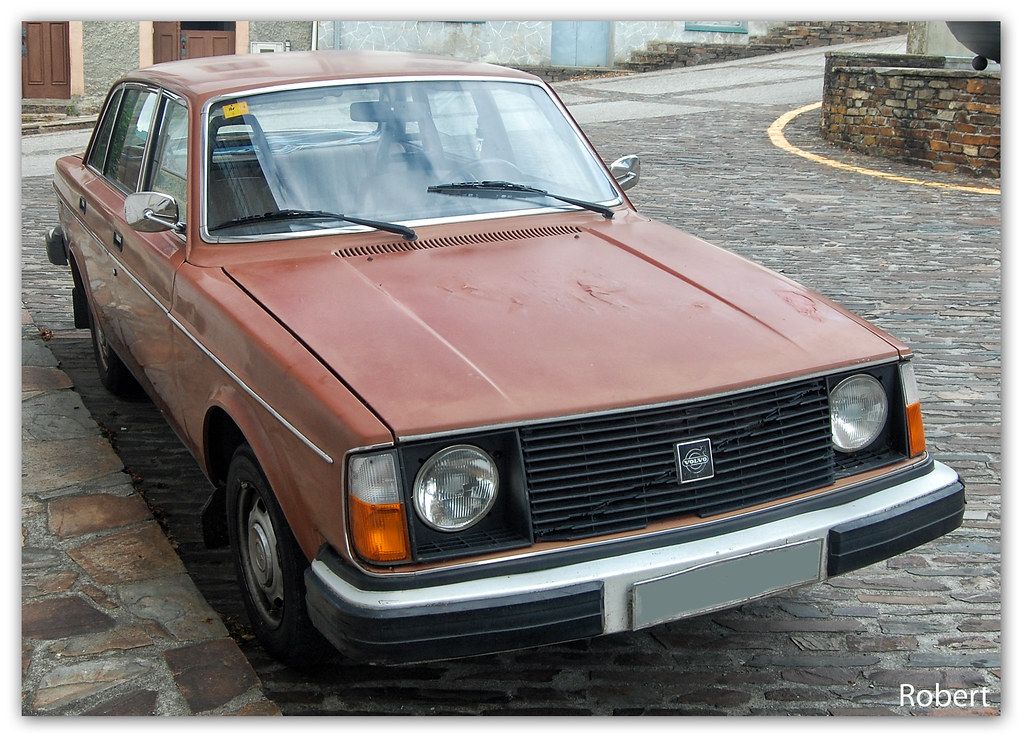
9. **Volvo 240**While an older selection, the Volvo 240 merits significant recognition for its remarkable engine durability. This iconic vehicle, produced through the early 1990s, has cultivated a dedicated cult following in the U.S., largely due to the legendary toughness of its “red block” engines. It stands as a powerful symbol of Swedish engineering, masterfully combining safety, unwavering durability, and practical design into one of automotive history’s most celebrated vehicles.
Even decades after its production ceased, it is still a common sight to spot Volvo 240s faithfully traversing American roads. Many of these vehicles boast astonishing odometers reading half a million miles or even more, all while running on their original engines. This extraordinary longevity vividly illustrates a bygone era of overbuilt reliability, a quality that is exceedingly rare in today’s automotive landscape and speaks volumes about Volvo’s commitment to lasting quality.
The 240, initially launched in 1974 as the successor to the 140 series, rapidly achieved global acclaim and remained in continuous production until 1993, with over 2.8 million units manufactured. Its distinctive, boxy shape was not merely a design choice but a functional one, enhancing driver visibility and simplifying maintenance. Volvo consistently refined the lineup, offering various body styles—the two-door 242, the four-door 244, and the spacious 245 station wagon—with families particularly gravitating towards the versatile wagon variant.
Beneath its utilitarian exterior, the Volvo 240 housed a range of dependable engines designed for endurance rather than raw speed. The standard B21A engine produced 97 horsepower, offering reliable daily performance, while the turbocharged B21ET variant boosted output to 155 horsepower. Although its average fuel economy of around 10 liters per 100 kilometers was not groundbreaking, the 240’s unparalleled, bulletproof reliability, allowing it to cover hundreds of thousands of miles with minimal trouble, solidified its reputation as a vehicle built to last in spectacular fashion.
Car Model Information: 1993 Volvo 240 Base
Name: Volvo 200 Series
Caption: 1989 Volvo 240 GL station wagon
Manufacturer: Volvo Cars
Production: 1974–1993,2,862,573 produced
ModelYears: 1975–1993
Assembly: ubl
Predecessor: Volvo 140 Series,Volvo 164
Successor: Volvo 850,Volvo 760
Class: Mid-size car
BodyStyle: Sedan (automobile),station wagon
Layout: Front-engine, rear-wheel-drive
Platform: Volvo P platform
Related: Volvo 262C
Engine: collapsible list
Title: Petrol and diesel engines
Transmission: 4-speed manual,4-speed manual with overdrive,5-speed manual,3-speed automatic,4-speed automatic
Wheelbase: 104.3 in
Abbr: on
Length: convert
Width: convert
Height: convert
Designer: Jan Wilsgaard
Categories: 1980s cars, 1990s cars, All articles needing additional references, All articles with incomplete citations, All articles with unsourced statements
Summary: The Volvo 200 Series (designated internally as the 240 and 260 models) was a range of mid-size cars manufactured by Swedish automaker Volvo Cars from 1974 to 1993. Designed by Jan Wilsgaard, the series was developed from the Volvo 140 Series and incorporated safety innovations from Volvo’s VESC experimental safety vehicle program.
The 200 Series was produced in sedan, station wagon, and limited convertible body styles. Over 2.8 million units were manufactured during its 19-year production run, making it one of Volvo’s most successful model lines. The series established Volvo’s reputation for safety and durability, with many examples remaining in service decades after production ended.
Production overlapped with the introduction of the Volvo 700 Series in 1982. While the 260 Series was discontinued in 1984 and replaced by the 700 Series, the popular 240 model continued production until 1993. The final 240 was manufactured on 14 May 1993, concluding nearly two decades of production.
Get more information about: Volvo 200 Series
Buying a high-performing used car >>>
Brand: Volvo Model: 240
Price: $9,100 Mileage: 123,000 mi.
Read more about: Buckle Up, Boomers! 12 Legendary Rides from Your Youth That Are STILL a Total Blast to Drive

10. **Jeep Cherokee XJ (4.0L Inline-Six)**The Jeep Cherokee XJ, produced between the 1980s and 2001, is celebrated for housing one of the most respected engines in American automotive history: the venerable 4.0-liter inline-six. This engine, often referred to as the “Power Tech,” has attained legendary status among off-roaders and outdoor enthusiasts due to its fundamental simplicity and uncompromising toughness. It has become a potent symbol of rugged durability and consistent performance within Jeep’s esteemed lineup.
Its enduring success stems from a robust design featuring a cast-iron block paired with an aluminum cylinder head, meticulously engineered for longevity even under the most extreme conditions. The inherent balance of its inline-six configuration contributes to both its strength and smooth operation, significantly enhancing the overall driving experience. With a displacement of 4.0 liters, the Power Tech engine typically produces around 190 horsepower and 235 lb-ft of torque, making it equally adept at handling routine commutes and conquering challenging off-road trails.
Decades after the cessation of its production, countless Cherokee XJs continue to operate with remarkable strength, many without ever having required a major engine overhaul. This enduring performance is a powerful testament to the engine’s exceptional build quality and its inherent resistance to wear and tear. It exemplifies a design philosophy that prioritized long-term reliability and rugged functionality above all else.
The 4.0L engine’s influence is evident in its widespread application across numerous Jeep models. It was a defining feature of the Jeep Cherokee (XJ) from 1987 to 2001, anchoring its reputation as a highly capable and versatile off-roader. It also served as the robust heart of the Jeep Wrangler (TJ) from 1997 to 2006, where its torque-rich character perfectly complemented the Wrangler’s adventurous spirit, and powered the Jeep Grand Cherokee (ZJ) from 1993 to 1998, further cementing its foundational role in Jeep engineering. This adaptability ensured it appealed to a wide demographic, from casual drivers to dedicated off-road enthusiasts.
**Key Insights into Maximizing Your Car’s Lifespan and Understanding True Engine Wear**
While discussing these ten paragons of engine reliability, it’s also crucial to delve into the broader factors that influence a vehicle’s lifespan and the true nature of engine wear. For generations, the condition of a car was primarily benchmarked by its odometer reading, often referred to as engine mileage. However, the realities of modern driving, characterized by increased stop-and-go traffic, frequent rapid starts and stops, and unfortunately, a common lack of diligent maintenance, have altered this traditional perspective.
Our expectations for car lifespans have evolved, with the typical engine mileage life expectancy now standing at around 200,000 miles, equating to roughly 10 years for most drivers. This is a considerable improvement from previous eras when the average lifespan was considered to be a maximum of eight years and around 150,000 miles. However, this extended lifespan comes with new considerations, particularly regarding how different driving conditions impact internal engine components.
A significant, yet often overlooked, factor affecting engine wear is idling. As a vehicle sits stationary at a red light or in traffic, the engine continues to operate, consuming fuel and generating internal friction, yet the odometer remains static, not clocking any mileage. This means the engine is undergoing wear without visible numerical progression, creating a discrepancy between perceived and actual usage. Automotive experts now estimate that sixty minutes of engine idling is equivalent to approximately 30 miles of engine wear.
Given the prevalence of traffic congestion, with drivers routinely encountering multiple red lights and slow-moving conditions during their daily commutes, the cumulative effect of idling can be substantial. For this reason, many within the automotive industry are advocating for a shift from solely tracking engine mileage to incorporating engine hours as a more accurate gauge of a vehicle’s true condition and the wear on its engine. This is particularly pertinent for fleet vehicles and trucks, which often spend considerable time idling, though it may well become a standard for personal vehicles in the future.
To better understand a vehicle’s actual operational life and to establish a more precise preventive maintenance schedule, calculating engine hours becomes invaluable. The formula is straightforward: multiply the number of hours the engine has been operated by a factor of 60. This calculation provides a close approximation of the mileage accumulated through both driving and idling, offering a more holistic view of engine usage and potential wear. For instance, if an engine meter registers 10,000 hours, this equates to approximately 600,000 ‘engine miles’ of operational life, regardless of the odometer reading.
Furthermore, when considering which engine types offer greater longevity between service requirements, diesel-powered engines often stand out. Despite the louder operational noise they may produce, diesels are renowned for their superior gas mileage and notably longer intervals between maintenance tasks. Typically, a diesel engine can provide approximately 25% more operational mileage compared to a comparable petroleum engine, making them a compelling choice for high-usage applications or for those prioritizing reduced service frequency.
For those in the market for a used car, especially one where the odometer may not be functional or its accuracy is questionable, there are several methods to ascertain the engine’s true mileage. Purchasing a comprehensive vehicle history report, such as those offered by third-party services, is a primary step. Additionally, requesting maintenance records from the previous owner, if available, can provide valuable insights. Newer vehicles equipped with telematics systems like OnStar often maintain an online engine mileage history, while the chips embedded in modern car keys frequently store this critical data. For a professional assessment, a trusted mechanic can utilize an odometer scan tool, or an authorized dealership’s service department can perform a detailed engine mileage check using their specialized computerized diagnostic tools.
Ultimately, modern engines are engineered to extraordinary standards, with some capable of lasting over a million miles before showing enough wear and tear to warrant a rebuild or engine overhaul. However, individual driving habits play a crucial role in determining when such significant maintenance might be required. The cumulative effects of consistent starting, stopping, and extensive idling, as previously discussed, can accelerate wear. Factoring in these elements, an engine overhaul might be needed closer to the 750,000-mile mark. Encouragingly, once an engine overhaul is meticulously completed, owners can reasonably anticipate an additional 10,000 engine miles of reliable driving and/or idling time from their revitalized powerplant.
**Conclusion**
In an automotive landscape where the quest for the perfect vehicle often balances performance, style, and practicality, engine reliability consistently emerges as a paramount concern for American drivers. The vehicles highlighted in this comprehensive guide—from the enduring power of the Chevrolet Impala’s V6 to the legendary toughness of the Jeep Cherokee XJ’s inline-six—stand as powerful testaments to engineering excellence and long-term value. These models exemplify how thoughtful design and robust construction can translate into hundreds of thousands of miles of dependable service, sparing owners the significant cost and inconvenience of premature engine overhauls.
Car Model Information: 2019 Volkswagen Atlas 3.6L SE
Name: Jeep Cherokee (XJ)
Caption: 1984–1996 Jeep Cherokee 2-door
Manufacturer: American Motors Corporation,Chrysler Corporation,DaimlerChrysler
Aka: Jeep Wagoneer Limited (1984–1990),Renault Jeep Cherokee,In China:,Jeep 2500/2700,Beijing BJ2021/BJ7250,BAW Qishi,Shuanghuan SHJZH213
Production: U.S.: 1983–June 2001,China:,Beijing Jeep,1994–1997 (Shuanghuan),BAW,South America,Venezuela: 1987–2001,Argentina: 1996–2000,Egypt: 1992–2001
ModelYears: U.S.: 1984–2001
Assembly: Toledo, Ohio,Beijing,Valencia, Carabobo,Ferreyra, Córdoba,Pademangan,Cairo
Class: Compact SUV,Compact car
BodyStyle: Sport utility vehicle,4-door SUV
Related: Jeep Comanche,Jeep Grand Cherokee (ZJ),Jeep Wrangler (YJ),#XJ in China,BAW Qishi
Layout: Front-engine, rear-wheel-drive layout,rear-wheel drive
Engine: unbulleted list
Abbr: on (BAW Qishi)
Order: VM Motori,List of VM Motori engines#425 OHV
Transmission: Aisin,Aisin,Peugeot,Aisin,New Venture Gear,Chrysler,TorqueFlite#30RH,Aisin
Wheelbase: {{convert,101.4,in,mm,0,abbr=on
Length: 1987–1990: {{convert,165.3,in,mm,0,abbr=on
Width: 1987–1993, BAW Qishi: {{convert,70.5,in,mm,0,abbr=on
Height: 1987–1988 2WD: {{convert,63.4,in,mm,0,abbr=on
Weight: {{convert,3357,lb,kg,abbr=on
Predecessor: Jeep Cherokee (SJ),Jeep Wagoneer (SJ)
Successor: Jeep Liberty (KJ),Jeep Grand Cherokee (ZJ)
Designer: Dick Teague
Categories: 1980s cars, 1990s cars, 2000s cars, All-wheel-drive vehicles, All articles with dead external links
Summary: The Jeep Cherokee (XJ) is a sport utility vehicle developed by American Motors Corporation (AMC) and marketed across a single generation by Jeep in the United States from 1983 (model year 1984) through 2001, and globally through 2014. It was available in two- or four-door, five-passenger, front-engine, rear- or four-wheel drive configurations.
Sharing the name of the original, full-size Cherokee SJ model, the 1984 XJ Cherokee was Jeep’s first all-new design since the 1963 SJ Wagoneer, as well as the first American off-road vehicle built with fully integrated body-and-frame (unibody) design, and formed the mechanical basis for the Jeep Comanche (MJ) pickup truck (1986–1992).
Jeep marketed XJs as Sportwagons, a precursor to the modern sport utility vehicle (SUV) before that term was used. The XJ is credited for spawning competitors, as other automakers noticed the design cannibalizing sales from regular cars, supplanting the role of the station wagon and transforming the vehicle type “from truck to limousine in the eyes of countless suburban owners,” though GM had also launched road-biased, RWD and 4WD compact SUVs, the Chevrolet S-10 Blazer and GMC S-15 Jimmy, one year earlier, initially available in two-door form only.
The 2007 book Jeep Off-Road called the XJ a “significant link in the evolution of the 4×4.” In 2011, Kiplinger magazine selected the XJ as one of the “cars that refuse to die.” Automotive journalist Robert Cumberford, writing for Automobile, called the Jeep XJ one of the 20 greatest cars of all time — for its design, and “possibly the best SUV shape of all time, it is the paradigmatic model to which other designers have since aspired.”
Get more information about: Jeep Cherokee (XJ)
Buying a high-performing used car >>>
Brand: Jeep Model: Cherokee XJ
Price: $15,988 Mileage: 72,895 mi.
Beyond these specific examples, our deeper dive into the nuances of engine mileage, the impact of driving habits like idling, and the growing importance of tracking engine hours provides crucial insights for every car owner. Choosing a vehicle with a proven track record for engine durability is a fundamental step towards peace of mind, but proactive maintenance and an informed understanding of how daily usage affects your engine are equally vital. Ultimately, investing in a car known for its reliable engine is not just about avoiding repairs; it’s about securing countless journeys, building lasting trust, and truly embracing the open road for years to come. By prioritizing durability and smart ownership, you ensure your vehicle remains a dependable partner, mile after reliable mile.


